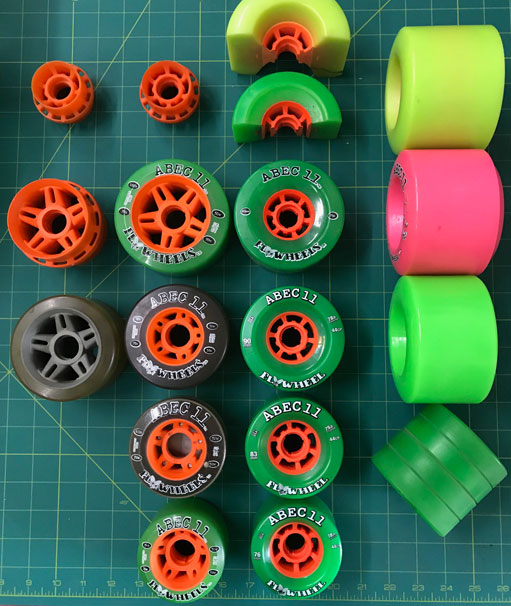Hub motors are here to stay. Not because they are any better or superior than their comparable belt/pulley driven motors, but because it is irresistible to NOT want to stash your motors inside your wheels and make it look aesthetically pleasing. Stealth is cool. Uncluttered boards have sex appeal. Having fewer parts is also nice, as long as the parts that you keep perform well and are readily available and reflect a flexible/open system and not a closed/proprietary system. Most of the people on this site are here because they don’t want to be boxed into ONE person’s idea of what an electric skateboard should be, or only what ONE person wants to produce and distribute. In the “push” longboard market we stick to a couple of known standards (new school hole pattern, 608 bearings, .400" bearing spacings, 1" bushing diameters, 10-32 mounting hardware or equivalent, 3/8"-24 kingpins, 5/16"-24 axles), and the consumer can mix and match and upgrade parts from different vendors as he/she chooses. This is a beautiful thing.
If you trust ONE person/company to make these unilateral decisions for you, then you buy a complete. Rarely is every link a strong one, but as long as everything is “acceptable”, you can ride around and be happy. Most people here aren’t going to be happy with one vision, one way.
As this relates to wheels, my current plans are to support the community with a number of nice wheel options. My experience is that you want a LOT of top notch urethane as a percentage of volume when considering the harder hub/core/bearings inside of them. When I oversized my cores in the V1 Flywheel series, there were only a couple of wheel/hub combos that proved to be viable. When I evolved the wheel and hub designs to include more urethane, EVERY wheel got better. Here are a few pictures of the history of the Flywheel and related big wheels, and a comparison chart showing the depth of urethane as it bears to the size of the wheel and hub. Let me know if your experience is the same or different.
The newer 45mm hub compare to the oversized 70mm original …
V1 Flywheels with on the left full width (52mm) hubs that are 50mm and 70mm in diameter …
We learned a LOT about oversizing the hub with some the big wheels here …
Some of small and medium hub wheels with wide contact patches

The 83mm OD x 78mm width started with a “Double Wide” Flywheel where I cut and glued two wheels with 4 bearings. Later I used a medium hub with 2 bearings, then a small hub, and then a narrower offset version …





 I never ride a longboard… did try skateboard few times but that was it. Now I want to build my eboard of some sort and I can’t understand why longboard wheels are shaped like they are? I belive 99% of videos that I saw was just riding straight with few not very hard turns. A big flat surface in longboard wheel = more friction and resistance, right?
So maybe they should look more like roller skate wheels or something in between? Please guys educate me
I never ride a longboard… did try skateboard few times but that was it. Now I want to build my eboard of some sort and I can’t understand why longboard wheels are shaped like they are? I belive 99% of videos that I saw was just riding straight with few not very hard turns. A big flat surface in longboard wheel = more friction and resistance, right?
So maybe they should look more like roller skate wheels or something in between? Please guys educate me 
